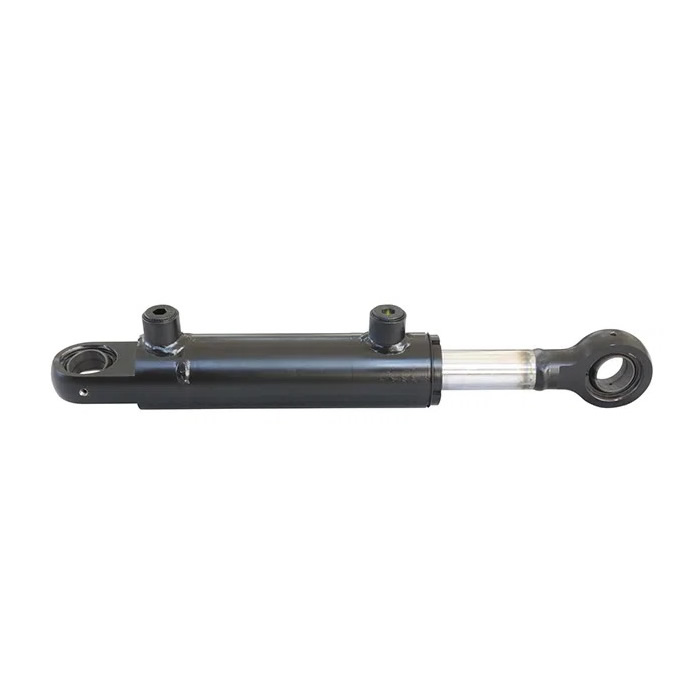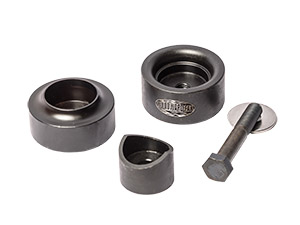Types of Hand Saw UK –
We show you the different types of hand saw UK. There are a number of different types of hand saws available on the UK market. When UK buyers use the word hand saw, they are normally referring to a standard hand saw around 550mm in length (21″), with a handle and a blade with teeth as shown below.
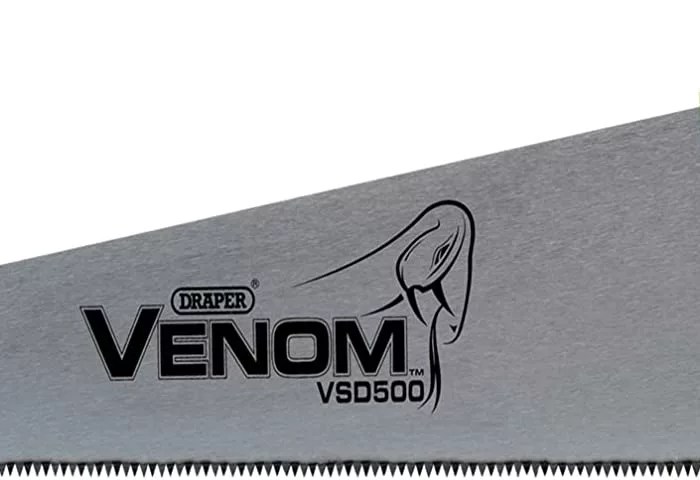
Other people consider a hand saw to be any type of saw where you use your hand to manually make use of the saw. There are a number of different types of these and we have listed these below. These hand saws can be used for various woodworking purposes and for various DIY projects around the home and garden.
Hand saws are one of the most popular tools used in the UK. If you do any home repairs or DIY projects chances are you will need some type of hand saw to help get the job done. Power tools are of course in common use but they do take a bit of time to set up and for quick jobs a hand saw may just be more convenient.
Hand Saw Buying Guide
Just below we have included a short buyer’s guide below just to explain what the key parts of a saw are, and what to look for before buying. These are all common features in all types of hand saw.
Blades and Teeth Per Inch (TPI)
The blade, which does the cutting, is by far the most important consideration on any saw. All blades are made of metal, usually a multi-purpose carbon spring steel, and some may have an additional protective coating, that helps stop the blade from rusting, and also makes it less prone to sticking of jarring when making a cut. This is the same type of steel that is used in knives. Saw blades are generally thin with an average thickness of just 0.85-1 mm.
Teeth per Inch (TPI)
All blades have sharp pointed teeth to do the actual cutting. The number of teeth on a blade determine how fine the cut will be. The finer the cut the neater the finish on the material will be. This is measured in Teeth per inch (TPI)
- Blades with 7 or less TPI – these are classed as coarse cut saws and used for cutting planks, sheets of wood, or rougher cuts on tree branches, of when pruning
- Blades between 7-11 TPI – these are pretty standard for most hand saws and deliver a medium general purpose cut which would be the most common
- Blades with 12 or more TPI are used for fine or finished cuts. You will find these on fret saws and coping saws where you are looking for a much finer and neater finish.
A typical hand saw is around 500 mm long (20″) and will have 8 TPI. Teeth are made in different ways with triple ground teeth being the best method.
Handles
Handles are usually made of a hard ABS plastic but there are also some hand saws that have more traditional wooden handles. The handle is glued and often screwed onto the blade to make a strong connection. Some of the plastic handles may also have a rubber solution added to them that does make them more comfortable to use. It also gives them a better grip. This mould usually is designed to allow your fingers to wrap around the grip when sawing.
The better quality handles will have enough room to allow you to wear gloves and still be able to get your fingers around the grip.
Brands & Prices
Most tool brands make different types of hand saws. These include Stanley, Irwin, Bahco and Draper. Most hand saws cost less than £10, and for the better quality and specialist saws, expect t0 pay around £20.
Hand Saws for Cutting Wood
1. General Purpose Hand Saw (Panel & Rip Saws)
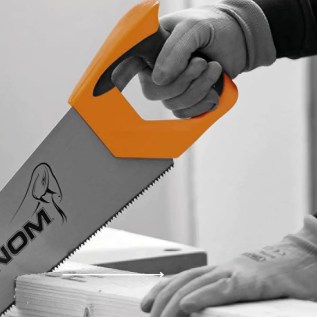
The general purpose hand saw is the most popular and one that most home owners will be familiar with. This can also be called a panel saw, rip saw or even just a general purpose hard point wood saw.
These have a handle and a blade. The handles will either be made of plastic or wood and some may have a soft grip. The blades can vary in length, and the number of teeth in the blade is the most important thing to understand when buying one. The number of teeth is usually measured in teeth per inch (TPI)
- Less than 7 teeth – for coarse cutting
- 7-11 TPI is called a medium coarse cut
- Greater than 12 teeth is for finer cuts
If you don’t own one of these, then you probably should. They are great for general purpose cutting and sometimes it is just as quick to use one of these than go to the bother of setting up a power saw.
Generally speaking hard point hand saws can’t be sharpened and when they go blunt just need to be replaced. That makes them a good enough choice for anyone who just needs to do the odd bit of sawing. Carpenters and joiners will be more likely to have a few slightly different hand saws that can do rough cutting and all the way through to fine finishes.
2. Floorboard Saw
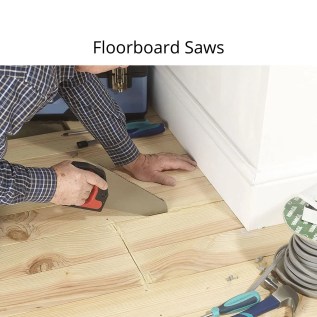
As the name would suggest these are used for cutting floorboards. Floorboards may need lifted to replace them, but more commonly they need to be cut to give you access to electric cables or central heating pipes in your home.
If you are doing a lot of cuts, then a plunge saw or a chop saw is a better idea as they will be faster.
This manual floorboard saw is better if you don’t want to risk cutting an electric cable or a pipe.
They are also ideal if you just have to cut a few floorboards for doing a few DIY jobs around the home.
Those who like to do a lot of DIY will benefit from owning one of these. They are more popular in the electrical and plumbing trades for obvious reasons.
3. Coping Saw
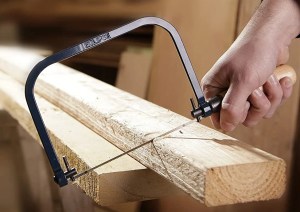
A coping saw is used to do intricate cuts in wood and is often used to cut shapes in moulding. They can be used in wood up to about an inch in depth.
The coping saw has a C-shaped handle and a blade that is secured in place by tension. The main purpose of these is to allow the user to make curved cuts in wood
Curved cuts are also known as coping cuts in the world of carpentry
The blades of a coping saw are very thin with around 15 to 17 per inch of the blade.
These saws are lightweight and typically measure around 6 inches.
Those who like to do a lot of DIY will benefit from owning one of these. They are more popular in the electrical and plumbing trades for obvious reasons.
4. Fret Saw
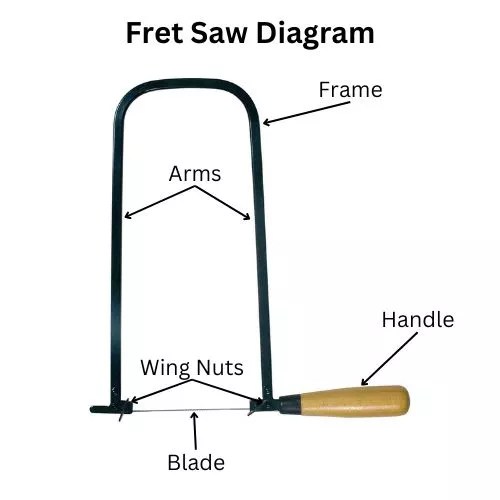
A fret saw is a frame saw that has a narrow blade. It is very similar to the coping saw explained above, and also very like the scroll saw or the jeweller’s saw.
The most popular use of the fret saw is for delicate detailed cutting of shapes into wood. It is a popular saw used by guitar makers and other wooden musical instruments. Some artists will use this for very fine woodworking patterns
The blade and handle on the fret saw is thinner and slightly shorter than the coping saw.
A scroll saw is an electric version of this and used by the vast majority of woodworkers
Most home owners and DIY people will never need to own one of these. Anyone who does craft should look at this saw a little closer as it could be very useful for them. They are used mainly for wood but can also be used for plastic and metal.
5. Tenon Saw
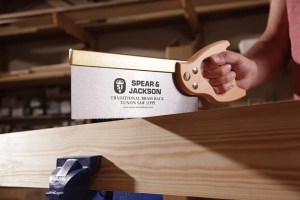
A tenon saw is typically around 12-14″ long. The older versions had a wooden handle that was riveted to the blade.
That has now been replaced with an ABS plastic handle that is moulded on to the blade. The handle is then covered with a soft grip for comfort.
There is also a hanging hole on the toe of the blade so as you can hang it up on a nail.
They are used mainly by furniture makers who need to have a fine and very neat finish on the wood.
Those who like to do a lot of DIY will benefit from owning one of these. They are more popular in the furniture making, woodworking and carpentry trades for obvious reasons.
6. Dovetail Saw
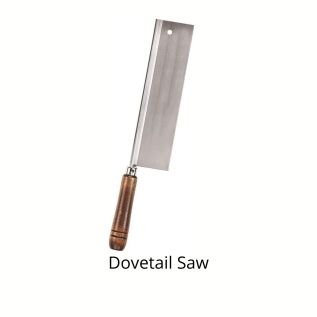
Dovetail saws are very similar to the tenon saw that we have just described above. They key difference should be that they should have a thinner blade and they should have more teeth per inch. (Should be between 14-20 TPI)
They are used for any cutting application that requires very precise cuts or where a very neat finish is required.
In the world of carpentry, a dovetail saw is used for making dovetail joints which are strong joints where two pieces of wood have to fit together very precisely.
The blade is short in length and they cut on the push stroke, but you will find that most of the models sold cut on both strokes.
Dovetail saws are used in furniture making, woodworking and carpentry trades for obvious reasons. The average DIY person will not really have much need for one of these. If you have a tenon saw then in most cases that will be enough. Some people will but a dovetail saw to cut laminate flooring or for PVC when a really neat finish is required.
7. Mitre Box Saw
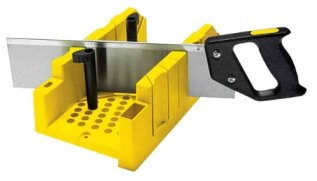
Mitre box saws are called by a few different names such as box saw and manual mitre saw. You can buy a mitre box which is usually a plastic box or a wooden box with slits at various angles. You can then use a tenon saw or a dovetail saw to make an angled cut using the mitre box as a guide.
More often though the mitre box and a mitre saw are sold together.
A mitre cut is a 45 degree angle cut, and most of these boxes also allow you to manually cut a 60 and a 30 degree angle.
Some of the better mitre boxes come with a saw that has built-in guide which are better for angled cutting
Mitre saws are mainly bought as electric versions but quite expensive. The manual box is better suited for most DIY people due to the price. Mitre cuts are popular for skirting boards, picture framing and similar uses.
8. Pad Saw (Plasterboard/Drywall Saw)
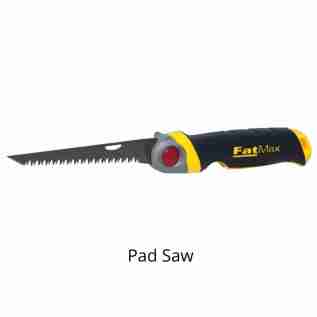
Pad saws do get called by a few different names. Some people call these plasterboard saws and others call the jab saws. They have a long and narrow saw blade which is the best choice for cutting straight and curved shapes into plasterboard for electrical socket recesses, thin wooden battens, plastic pipes, etc
That makes them very popular with electricians, plumbers and general construction workers. Many of these like the Stanley Fatmax jab saw fold up to make them safer to use as you can keep them in your pockets or toolbox.
Typically these will have 8 TPI so ideal for rougher and faster cuts and the better ones will cut on both the push and pull strokes.
9. Bow Saws

Bow saws are used to help cut down trees or branches.
They are also popular for cutting through logs
They offer an affordable and portable solution to a chainsaw as they are much cheaper and can still get through wood really fast.
Typically they are sold with a couple of blades, one for dry wood and one for wet woods – wet woods are things live branches or trees which contain a lot of sap and moisture.
They usually have a C-shaped handle as you can see in the image to the left.
10. Japanese Saws

Japanese saws are often referred to as pull saws. The blades on a Japanese saw are very thin and as such, they make much finer and neater cuts.
Most of them have a long handle with a blade. The blade has teeth on either side of the blade.. One set of teeth are designed to be able to do cross cuts, and the teeth on the other side of the blade are designed to do rip cuts.
The familiar types of Japanese saws are Dozuki, Ryoba, Kugihiki, Azebiki, Oga and Mawashibiki.
They are good saws for finer work on frames, picture rails and skirting boards. They are also good for cutting along the bottom of doors.
Hand Saws for Cutting Metal & Plastic
There are a couple of hand saws that are primarily manufactured to cut metal. The most popular are the hacksaw and the junior hacksaw which we have explained below.
11. Hacksaw
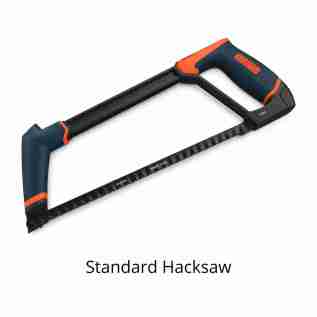
The standard hacksaw is a narrow flexible blade that gets tensioned on a rigid C-frame. It can cut thin sheet metal and also cut through bolts and screws if required.
Blades with lower teeth per inch work better for tougher and thicker metals such as steel and iron, though they do leave quite a rough cut
Higher TPI blades are better for cutting thin or soft metals such as copper and aluminium.
Hacksaws can also be used to cut wood, plastic and items like conduit, rods, and metal and plastic pipes
Hacksaws tend to have a pistol style grip. Most hacksaws use a 300mm (12″) blade but always check the size as some manufacturers use different lengths.
12. Junior Hacksaw
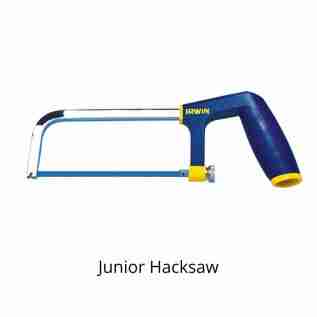
As the name junior might suggest these are a smaller version of the standard hacksaw. In most cases they are 150 mm long (6″) and about half the size and blade length of the standard 300 mm (12″) hacksaw.
These are just easier to store in your tool box or tool bag and are also much lighter. The downside is that the stroke length is shorter so you will need a few more strokes to cut through plastic and metal.
Ideal for doing small quick jobs where a standard hacksaw is not necessary.
The blades are simple to change and any 150mm blade can be used as a replacement between brands
Some junior hacksaws use a pistol style grip such as the Irwin junior hacksaw shown above, whereas, other brands will use a more basic handle. The pistol style grip does offer more control and as such is better for making more accurate cuts.
Best Hand Saw for Cutting Logs
The best hand saw for cutting logs is a bow saw. We have explained those above. Just be aware that you can get two different types of blades for bow saws. One blade type is suitable for cutting dry logs and the other type is better for cutting wet or as it is better known, green wood. If you own a bow saw it isa good idea to have one of each blade type which then allows you to cut any type of wood.
Best Hand Saw for Cutting Wood
The best hand saw for cutting wood straight is a standard hand saw. These are affordable and there are lots of different choices from different brands. For general purpose wood cutting we would recommend the Spear & Jackson B98SF Predator Second Fix Saw. That is a standard 20″ hand saw with 10TPI so ideal for general purpose wood cutting.
Best Hand Saw for Cutting MDF
Most people will use a circular saw to make straight cuts in MDF, and a jigsaw to make curved or angles cuts in MDF. MDF is a manmade board and difficult to get exact straight lines with a hand saw. The best hand saw for cutting MDF is any hand saw with 12TPI. The Presch hand saw would be our recommended choice for cutting MDF and other fibre boards.
Best Hand Saw for Cutting Sleepers
Sleepers, commonly known as railway sleepers, do come in slightly different sizes. The most common length is 2.6 metres (8ft 6″). The most common width is 250mm (10″) and the most common thicknesses are 125mm or 150mm (5″ & 6″).
Most people will need a hand saw that can handle cutting through a 250mm x 150mm piece of wood. The best hand saw for cutting sleepers is the Stanley 515289 FatMax, which is a heavy duty hand saw.
Best Hand Saw for DIY Projects
The best hand saw for DIY projects is the Spear & Jackson B9822 Predator Universal Saw.
Best Hand Saw for Trimming Doors
The best hand saw for trimming doors is a Japanese saw. If you can get the door off then a circular saw is the easiest and fastest way to trim a door. However, if you don’t want the hassle of removing a door, or simply can’t get the door off, then a Japanese hand saw is the best option.
Best Hand Saw for Harder Woods
The best hand saw for hard wood is
Hand Saw Summary
As you can see there is a hand saw for almost every job that you will ever need to do. For those who just want to be able to do some basic home repairs, you will probably only ever need to own a hand saw and a hacksaw. Those will allow you to do a wide range of jobs around the home and garden.
The other hand saws explained on this page are really for more specialised types of work.
